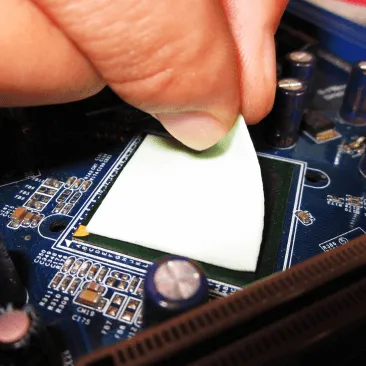
Generally, a silicone rubber that has undergone secondary vulcanization is needed to make a soft, elastic and tensile heat-resistant silicone gel sheet. Vulcanization can also be called curing.
After the liquid thermal silica gel is heated and formed in the first stage, its crosslink density is not enough. It is necessary to further vulcanize it to increase the tensile strength, resilience, hardness, swelling degree, density, and thermal stability of the thermal silicone pad.
If the secondary vulcanization is not performed, the performance of the thermal silicone pad produced may be affected to some extent, and a product with better performance may not be obtained. The parameters of the product after primary vulcanization are different from those of secondary vulcanization, which is also related to the actual operation process and steps.

 English
English
 usheenthermal
usheenthermal



